Desert Farmers and CAZRI
By Brook & Gaurav Bhagat

“Agriculture is not a dependable proposition in this area-- after the rainy season, at least 33% of crops definitely fail," stated Dr. Pratap Narain, director of the Central Arid Zone Research Institute (CAZRI),
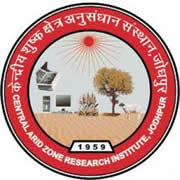 based in Jodhpur, Rajasthan. “Animal husbandry, trees and grasses, intercropped with vegetables or fruit trees, is the most viable model for arid, drought-prone regions."
based in Jodhpur, Rajasthan. “Animal husbandry, trees and grasses, intercropped with vegetables or fruit trees, is the most viable model for arid, drought-prone regions."
Nand Kishore Jaisalmeria, a local farmer who has won national awards for his progressive approach to agriculture, said current drought conditions have cost him a 30-40% loss.
Arid regions of Western Rajasthan, Gujarat, and Southern parts of Haryana receive low precipitation (under 40 CMS. normally) with high evapotranspiration due to high solar radiation and wind speed. The region faces frequent droughts. Overgrazing due to the high animal population, wind and water erosion, mining and other industries are serious land degradation processes, according to Dr. Narain.
Certain oceanographic features may be the cause of the current drought and shift in climate, he said. “We don’t have good oceanographic stations yet; we can only offer medium-range weather forecasting, which means about 15 days in advance. We can’t say when the monsoon, or any other rain will come."
In the last 15-20 years,
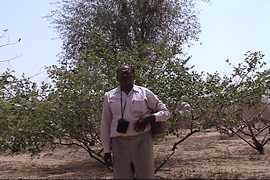 the Rajasthani desert has seen many changes, including a manifold increase of both the human and animal population. Animal husbandry has become popular due to the difficult farming conditions. At present, there are ten times more animals per person in Rajasthan than the national average, and overgrazing is also a factor affecting climatic and drought conditions.
the Rajasthani desert has seen many changes, including a manifold increase of both the human and animal population. Animal husbandry has become popular due to the difficult farming conditions. At present, there are ten times more animals per person in Rajasthan than the national average, and overgrazing is also a factor affecting climatic and drought conditions.
Since its establishment in 1959, CAZRI, funded primarily by the Indian Council of Agricultural Research, has been working under the mandate of undertaking basic and applied researches in order to contribute to the development of sustainable farming systems in the arid ecosystems.
In 2001, CAZRI established five multi-purpose tanks of 50,000 litre capacity to help meet drought needs, for which the cost was shared with farmers. Three 20-meter deep infiltration wells were established to enhance groundwater recharge, and subsurface barriers across the ephemeral stream increased well yield from 28 to 53%. Vegetative barriers, perhaps the most non-invasive way to conserve water, prevent runoff, and increased the yield of crops like pearl millet and mung bean in some areas from 30 to 50%.
In August of last year CAZRI held a drought management conference to discuss what they should reccomend that the goverment do in terms of drought-proofing and prevention. The scientists concluded that crops requiring less water should be cultivated, and that rooftop rainwater harvesting systems should be mandatory in the construction of new buildings. This water can be used for crops. The rooftop harvesting system of the CAZRI main office building alone provides water for 100,000 hectares of land.
In the short term, it was agreed that relief work must be done, like supplying grain and fodder for animals, and cleaning existing wells. For the long term, however, issues like how land-use policies might be adjusted and how people can be encouraged to grow more grasses and legumes came up.
“Right now survey teams are collecting data from farmers," said Dr. Narain. “We want to fuse technology with the indigenous wisdom of farmers, and learn how they are coping with the drought. After surveying, we will make a publication, and then submit it to the goverment."
Dr. Narain emphasized that CAZRI is primarily an agricultural research institute, however. “Construction is the responsibility of the state government. Technology is developed here, and then the state mechanism for distribution takes over. Our work is in planning, not execution."
Improved varieties of crops like low-rainfall grasses, for example, particularly Dhaman (Cenchurs cilaiaris) & Sewan (Lasiurus sindicus) have been developed in seed and pellet form which can be sown by helicopter, he said.
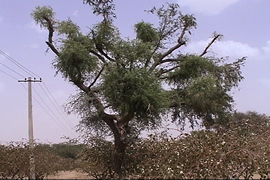
The scientists of CAZRI have successfully developed and improved dozens of traditional and non-traditional crops/fruits, such as Ber trees (like plums) that produce much larger fruits than before (lemon-size) and can thrive with minimal rainfall. These trees have become a profitable option for farmers. One example from a case study of horticulture showed that “In situation of budding in 35 plants of Ber and Guar (Gola, Seb & Mundia variety developed in CAZRI), using only one hectare of land, yielded 10,000 Kg. of Ber and 250 Kg. of Guar, which translates into double or even triple profit."
Acacia Senegal, a tree imported from Africa 25 years ago, has adapted well to the Indian desert. CAZRI has developed ethophil injection, an etheline compound which increases the gum production of the tree by 25-35%. This gum is used for eating and in various medicines.
Technology is transferred via field days, farmers’ fairs, exhibitions, training, and on-farm trials. “I adopted the new technology developed by CAZRI in 1976 by budding an improved variety of Ber," said Mr. Jaisalmeria. “It started giving good results in 2-3 years and gave a new crop idea to contemporary farmers."
He said the CAZRI ber trees had helped prevent soil erosion, and proved to be one of his most drought-resistant crops, along with indigenous trees like neem, khajeri & rohira. “Now 1,00,000 ha land (even sand dunes) is being cultivated which was not of any use before," he said.
One major area of CAZRI’s achievement is the rehabilitation of wastelands created by the large-scale mining of minerals like limestone and gypsum, which are found in abundance in arid zones. Technologies integrating suitable plant species, soil amendments and water harvesting have been developed, and many such wastelands have been successfully revitalized. Furthermore, scientists have identified several species of trees that can be planted on land contaminated by chemicals used in printing and dyeing clothes.
About 58% of the area of arid Rajasthan is occupied by highly mobile sand dunes, a serious danger to farms, canals, highways, and generally everyone living in the arid regions, and are a contributing factor to increased desertification. The institute has established shelterbelts consisting of three rows of trees: a central row of tall trees like Albizzia lebbek, with one row of branching trees like Acacia tortolis, Cassia siamea or Prosopis juliflora on either side. These shelterbelts have proved
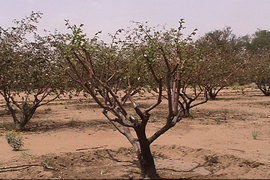 to reduce wind velocity by 20-46%, and soil loss by 76%. To date over 16,000 ha of land has been stabilized using this method.
to reduce wind velocity by 20-46%, and soil loss by 76%. To date over 16,000 ha of land has been stabilized using this method.
Also contributing to combatting desertification is CAZRI’s long-going project of mapping the desert, and identifying and understanding the processes leading to desertification. Using sattelite imagery, the extent of soil movement has been quantified, and underground courses of rivers like Saraswati have been located. These discoveries were confirmed through geophysical depth sounding, and later successfully used for groundwater exploration.
In the area of livestock management, which is an important source of sustenance for farmers in drought years, an animal feed block compression machine was developed in 2002 which compresses the feed 3-3.5 times, producing blocks of 2.5 kg weight. This reduces the costly burden of transporting large quantities of bulky animal feed. The machines now are being manufactured by private companies.
CAZRI scientists have also recently identified a new breed of sheep, Parbatsar, which has a higher growth rate, milk yield and duration of lactation. A technique of ensiling surplus fodder, using over-fermented milk, urea and molasses, has been developed.
Another recent discovery, heralded by Dainik Bhaskar, a Hindi national newspaper, is the development of fresh water fish that can survive in brackish (salty) water. Dr. Narain explained that Panaeus monodon shrimp and Seabass fish fry were reared with 92% survival and an average weight of 38 GMs and 12 GMs respectively in 140-150 days. Grey mullet fish could be grown to 1.4 GMs in 39 days in winter at 12-18 degree centigrade in waters up to 45 parts per thousand salinity. On March 16, a fair was held for over 300 participants, sharing this technology and seeds with willing farmers.
“We have contacted the Fishery Department and banks to help with financing," said Dr. Narain.
“Farmers will need to make fish ponds. CAZRI can give low-profit or free prawn seeds."
The recent discovery of the Dhingri Mushroom, which can be grown easily in arid regions, also proves to be a profitable new crop. Mushrooms were previously transported from remote areas, and are therefore expensive here.
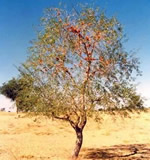
Other findings include finding of anti-HIV constituents viz. Betulinic acid (BA), oleanolic acid (OA) and ursolic acid (UA) were extracted and isolated by column chromatography, using standard protocol from Tecomella Undulata (Rohira). However, this is only a preliminary finding, caution researchers, which is currently being clinically tested by the Central Drug Research Institute, Lukhnow.
Although CAZRI is doing a great favour to the farmers in this region, still the regular drought and the poverty make the difference. And the rain is the thing which brings smile on the faces.
Did you like the article? Subscribe here to our New Article Email Alert or RSS feeds.
Sharing is caring! Don't forget to share the love, and keep the conversation going by leaving a comment below:
Advertisement
